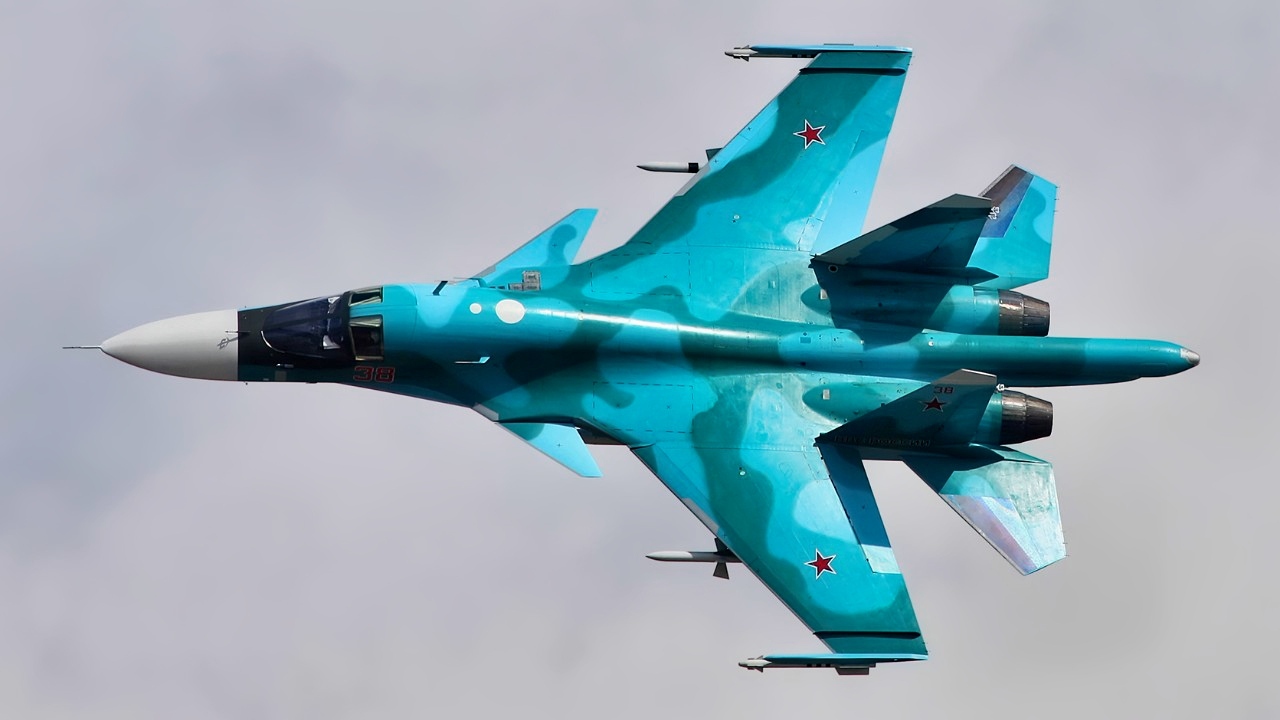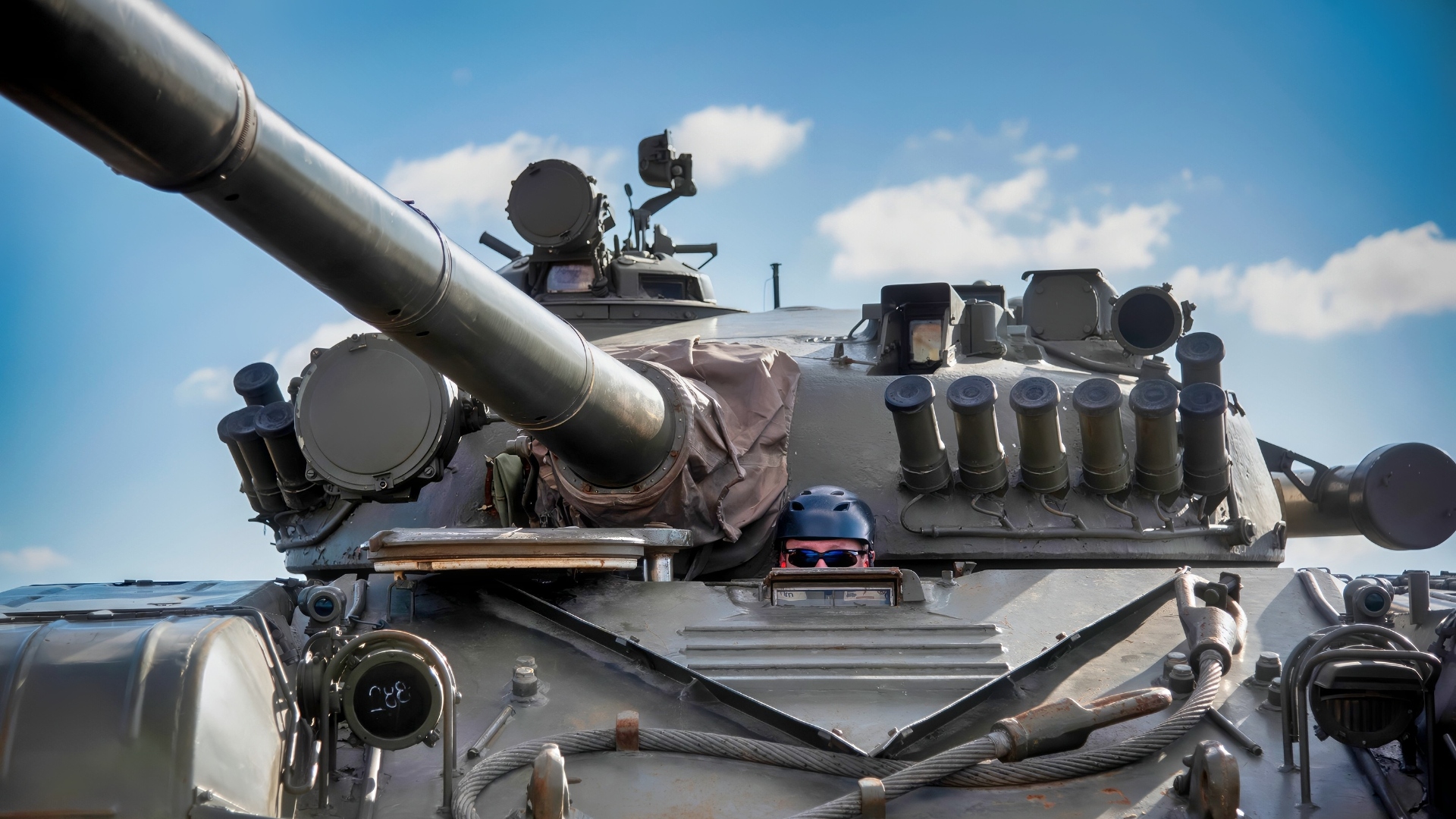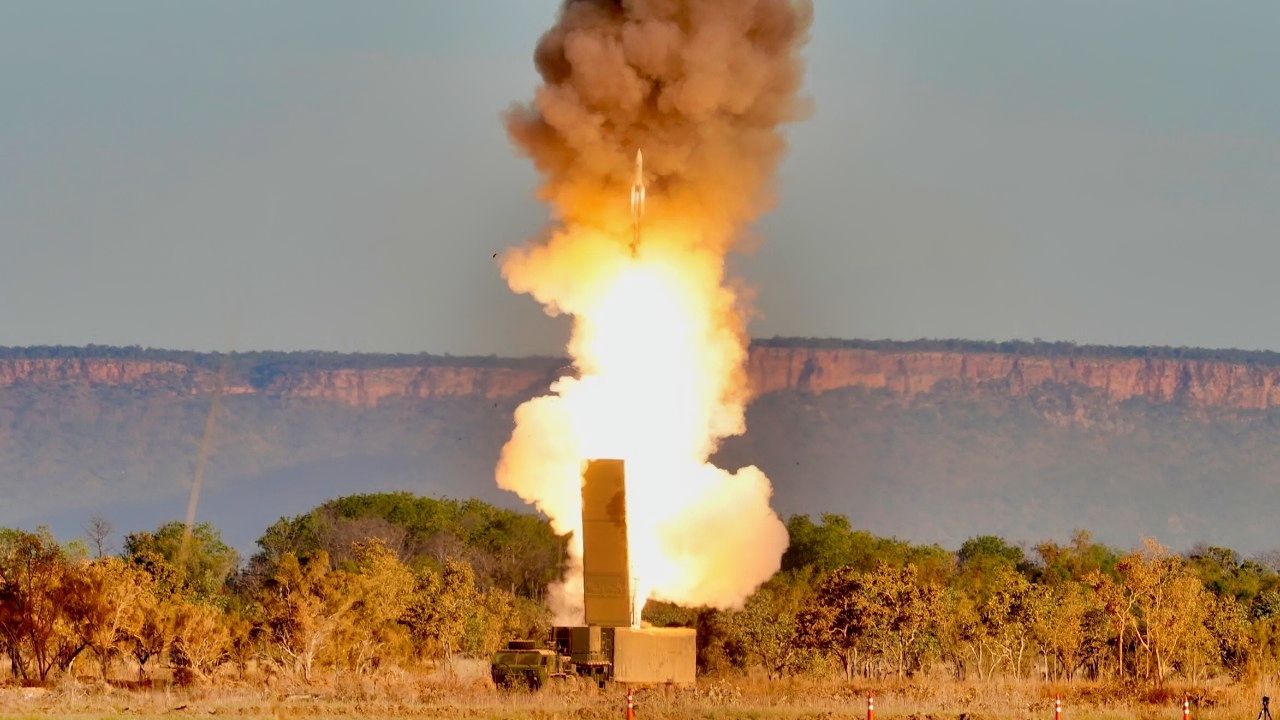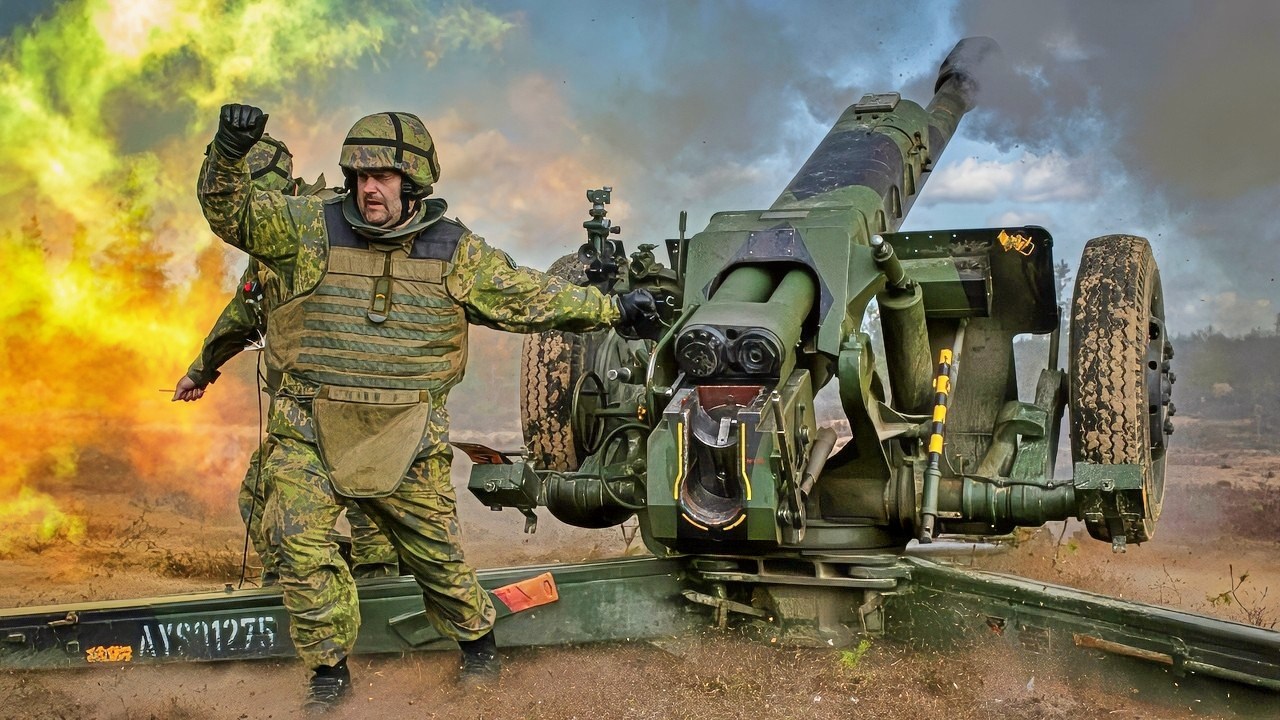Key Points and Summary – A likely Korea-style armistice in Ukraine would freeze the front lines without resolving the political conflict, but it would not leave Kyiv defenseless.
-Instead of NATO membership or foreign troops on its soil, Ukraine would receive long-term Western backing to build a large, hardened, NATO-standard force: deep precision-fire networks, layered air defenses, a small but lethal air force, and an asymmetric Black Sea strategy.

Su-34 Fullback. Creator: Vitaly V. Kuzmin. Credit: Vitaly V. Kuzmin
-This posture, sustained by Western industry and tight training and intelligence links, would make Ukraine the most capable non-NATO military in Europe—an armed, vigilant buffer on Russia’s flank born of Moscow’s own strategic miscalculation.
No Article 5, No Problem? How the West Plans to Arm Ukraine Anyway
A likely ceasefire in the Russia–Ukraine war is leading to increased interest in the Korean Armistice as a helpful, if imperfect, historical analogy.
Like 1953, the most plausible outcome now being discussed in Washington, Kyiv, and European capitals will include a hardened line of contact, unresolved political claims, and a long-term Western commitment to Ukraine’s defense that falls short of alliance guarantees.
But one central element is different. South Korea left its armistice with a U.S.–ROK mutual-defense treaty and a large, permanent deployment of American forces—pillars of U.S. power on the peninsula that turned it into a fortified outpost of U.S. hard power.
Ukraine will have neither. NATO membership is unlikely anytime soon, and no NATO member state will station forces in Ukraine.
Ukraine’s future instead will rest on a different sort of tripod: an enormous and sustained effort by the West to arm, train, and harden the country into a frontline military power.
The result, assuming the emerging U.S.-backed framework comes together, will be a heavily armed Ukraine on Russia’s western flank, much as a fortified South Korea was opposite the North after 1953—albeit with very different legal and institutional underpinnings.
The Armistice Logic
The Korean precedent is relevant because it illustrates how major wars can end without resolving the underlying political conflict that led to them.
Seoul never accepted the permanent loss of the North. Pyongyang never stopped claiming the whole peninsula.
The Armistice just froze the fighting, formalized a hostile frontier, and allowed the deeper rivalry to calcify. A Ukraine ceasefire would do the same. It would recognize Russian control of occupied territory, reflect Kyiv’s inability to retake those areas by force, and end active fighting without closing the geopolitical books between the two countries.

Tim Murry, a foreign threats compound contractor, drives a T-72 battle tank into position to serve as adversary targets for a joint service exercise, Emerald Flag, at Eglin Air Force Base, Fla., Nov. 30. Emerald Flag is a multi-service exercise aimed to unify information sharing across joint domain platforms. (U.S. Air Force photo/1st Lt Karissa Rodriguez)
This is not the same as a Ukrainian defeat. On the contrary, it is the acknowledgment that victory or success can take the form of survival, territorial preservation, and the imposition of high costs on a much more powerful adversary. Ukraine has already reshaped Moscow’s calculus by forcing Russia to spend immense manpower and matériel for marginal gains. The logical consequence will be, as in Korea, the West building Ukraine into a hardened, resilient frontline state that can deter renewed aggression.
Arming Ukraine Without Limits
If Ukraine cannot get Article 5 protection for political reasons shaped by its ongoing war and unresolved territorial disputes, it will receive something else but strategically potent: a long-term Western armament program on a scale not seen since the early Cold War.
Once the front stabilizes, many of the escalation-related guardrails that constrained Western transfers during active fighting will no longer apply. Red lines and concerns about rapid vertical escalation will fall by the wayside.
Western governments that have now invested deeply in Ukraine’s survival will not allow a fragile state to face Moscow’s next move unprepared.
The force that emerges from this process will be of a hybrid sort: built to NATO standards, equipped with NATO systems, and integrated into NATO planning cycles, but not inside NATO. Its purpose will be entirely clear—deterring and, if necessary, defeating any renewed Russian offensive.
The Shape of the Post-War Force
The contours of Ukraine’s future order of battle are already visible. The foundation will be long-range fires, precision strike, and unmanned systems focused on creating high costs across the depth of the Russian operational area.
The war has already shown that survivability, mass, and rapid targeting cycles are more important than legacy prestige platforms. Ukraine will therefore continue to develop hardened, mobile, sensor-rich fire formations whose size and endurance is sustained by reliable Western industrial output rather than the rationed munitions flow of 2022–23.
Airpower will follow suit. Western fighters entering service and maturing training pipelines mean Ukraine will soon be able to field a small but lethal air force capable of striking, intercepting, and shaping the battlespace with greater range and precision.
Layered air defenses (Patriot, NASAMS, IRIS-T, and next-generation systems) will deepen into one of the most integrated air-defense networks in Europe.
At sea, Ukraine will not seek parity with the Russian Navy. It will instead continue to refine its asymmetric approach: shore-based missiles, unmanned surface vessels, and maritime surveillance designed to deny Russia freedom of action in the Black Sea littoral. The last two years have shown the utility of that model; an armistice will enable Kyiv to institutionalize it.
On land, survivability will be the organizing principle. Protected mobility, counter-drone systems, electronic-warfare units, hardened logistics, and deep reserves will replace the pattern of emergency mobilization forced on Ukraine in the early weeks and months of the war. The result will be a professional frontier force that is configured less like Europe’s than Israel’s.
The Industrial Backbone
None of the above is possible without an enormous and durable ammunition and sustainment base.
The Korean armistice enabled the South to build stockpiles that could weather a prolonged conflict. Ukraine will likely follow suit.
North American and European defense industries—already expanding to integrate Ukraine as a client—will lock Ukrainian requirements into their long-term production cycles.
Ukraine’s deterrent strength will rest not on territorial depth or mobilization speed, but on the sheer scale and responsiveness of its ability to impose immediate, punishing costs on any renewed Russian attack.

Tu-160 Bomber from Russia. Image Credit: Creative Commons.
The result will be a permanent defense relationship between Ukraine and the West that, operationally, may be more significant than treaty membership. Ukraine will gain stable weapons pipelines, intelligence sharing, co-production agreements, training integration, and access to Western sustainment. These instruments will constitute a durable security ecosystem in place of Article 5.
Does Russia Have Something to Fear?
It does—and Moscow knows the implications. A post-war Ukraine armed with Western fires, air defenses, fighters, and deep stockpiles will be the most capable non-NATO military in Europe. It will sit directly on Russia’s flank.
And unlike NATO, which must square competing interests across three continents, Ukraine’s singular mission will be preventing Russia from ever marching west again.
The problem is structurally similar to the one Moscow faced after the Korean War. The United States invested heavily in making the South a fortified, resilient state able to absorb and defeat a conventional attack. Ukraine’s war is putting Kyiv on the same trajectory, even if the security architecture surrounding it differs in significant ways.
A Hard Future for Moscow
Ceasefire does not bring peace. It hardens frontiers, arms the weaker state, and emboldens the winner.
A truce will put an armed Ukraine on Russia’s flank, backed by the West’s industrial might and built by years of attrition on the Russian side.

3rd Multi-Domain Task Force (3MDTF) conducts the first Mid-Range Capability live fire exercise outside of the continental United States successfully sinking a maritime target with a Standard Missile-6 Force during Exercise Talisman Sabre 25 on July 16, 2025. US Army photo
Ukraine will not join NATO, and NATO troops will not deploy to Ukraine, but the Alliance will train, arm, and shape the force that guards Europe’s eastern approaches.
If Moscow feared NATO expansion before 2022, it now faces a different—and sharper—reality: a vigilant, heavily armed Ukraine that exists because of its own strategic miscalculation. The consequences will last long after the shooting stops.
About the Author: Dr. Andrew Latham
Andrew Latham is a non-resident fellow at Defense Priorities and a professor of international relations and political theory at Macalester College in Saint Paul, MN. You can follow him on X: @aakatham. He writes a daily column for the National Security Journal.
More Military
The F-35 Fighter Is In More Trouble Than You Think
Was USS Wasp Really the Worst U.S. Navy Aircraft Carrier?
The Navy Had a Nuclear Submarine That Could Tap Russia’s Undersea Cables and Self Destruct
The U.S. Navy’s Flying Aircraft Carrier Mistake Still Stings
